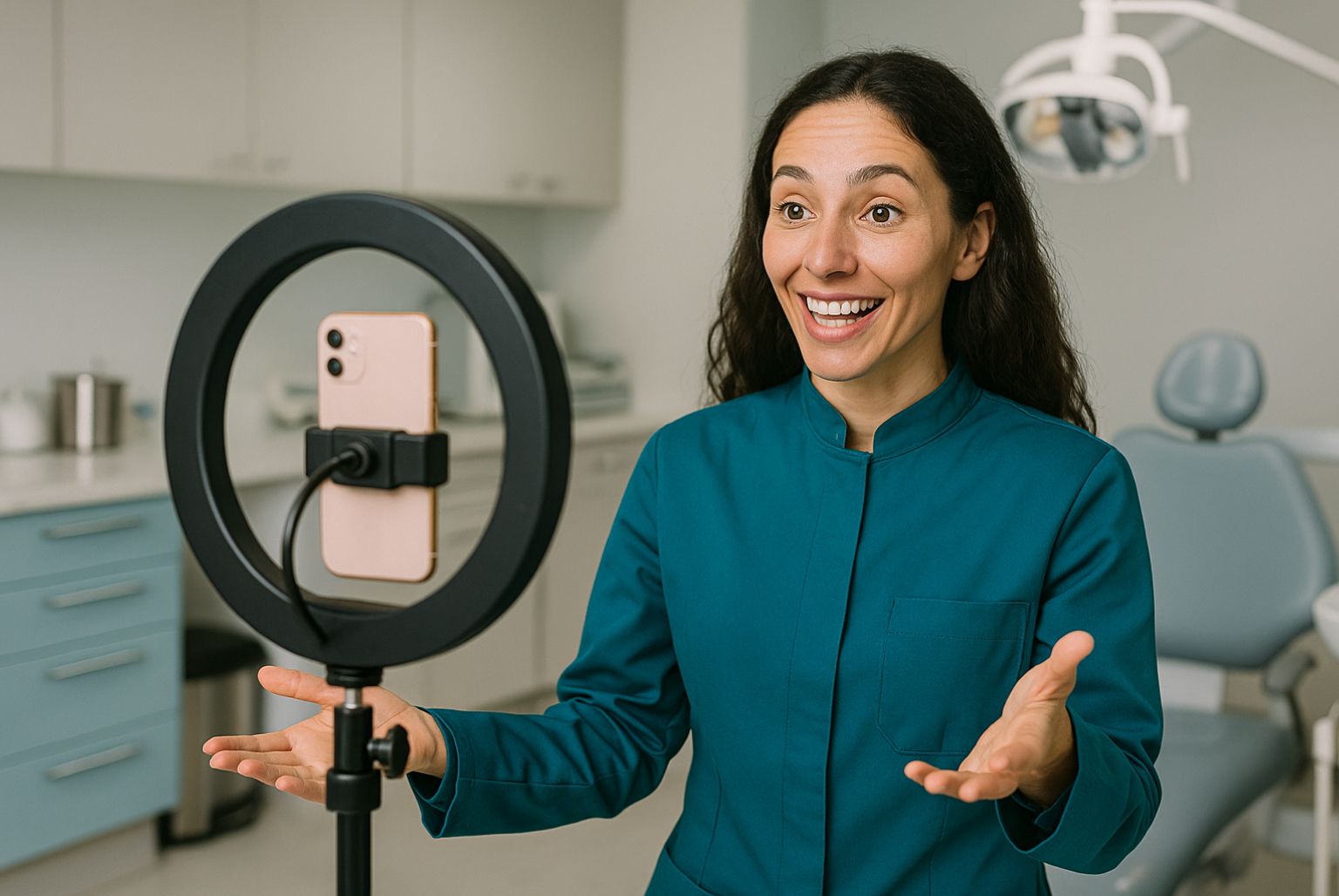Did you know that 91% of internet users now regularly read online reviews to check whether a business is good or bad? Or that 84% of people trust online reviews as much as a personal recommendation, while 74% of consumers say that positive reviews make them trust a local business more?
These were just three of the findings from the latest BrightLocal Local Consumer Survey Review (2016), which has been conducted each September since 2010.
As ever, the findings of the survey show us that a positive online reputation is one of the most powerful marketing assets any business can have. Of particular interest to anyone running a facial aesthetics clinic is that, in the list of businesses and sectors where reviews are viewed as most influential, the medical/healthcare sector comes third, overtaken only by restaurants and hotels.
This means that if you’re not collecting and promoting reviews for your facial aesthetics clinic, you really should be and that, if you already have positive reviews, you should make as much of them as possible rather than leaving them to gather virtual dust in a forgotten folder on your computer.
To help you, we’ve put together our own guide to attracting online clinic reviews, where to feature them and how to make the most of them.
Why are clinic reviews so important?
One of the biggest blocks to buying from a new business is fear – fear of making a mistake, fear of wasting money, fear of looking like a fool. For facial aesthetic clinics – or any business that impacts on the consumer’s personal appearance – this fear is potentially more pronounced.
As the stats above show, consumers tend to view positive reviews with the same weight as a personal recommendation – a vote of confidence that other people have used your services and been happy with the outcome.
Consumers expect businesses to sing their own praises and can be sceptical about marketing messages, whereas a review is seen in a more objective and favourable light. If someone has taken the time to leave a positive review, it must be because they’re happy with the service they received.
Reviews and SEO
According the Moz’s 2017 Local Search Ranking Factors Survey, review signals such as the quantity of reviews, quality of reviews and the speed with which they’re given by consumers could account for up to 13% of Google’s ranking signals.
In other words, if you can attract plenty of good reviews, preferably as soon as possible after someone has visited your clinic, it should positively affect where your web pages appear in searches.
The study even found that review signals have more impact than website clickthrough rates, mobile clicks to call your clinic, social media signals or personalisation.
The importance of star ratings
The BrightLocal Survey once again showed that not all reviews are equal. People are particularly drawn to online reviews that feature star ratings with or without a written testimonial.
In fact, for 58% of us, the overall star rating is the most influential factor; 47% of us also value the sentiment of the views and 41% consider how recently they were written.
It’s fair to say that star ratings are widely understood by consumers, even if they don’t speak the language in which the review is written. People are used to looking at reviews on Google, Facebook, Trip Advisor, etc. and seeing star ratings as a universal vote of confidence.
To make the most of your clinic reviews, it’s essential to use platforms and designs that include star ratings. Even if people don’t have time to read the review itself, the star ratings act as shorthand.
The age of your reviews
It’s worth noting another finding from the BrightLocal Survey and that is that 73% of consumers think that reviews that are more than three months old are no longer relevant.
The message is clear. Collecting reviews isn’t a one-time-only activity. You should be reaching out to your clients for reviews on an ongoing basis for the most positive impact.
The best places to feature clinic reviews
The most recent BrightLocal Survey found that 63% of people use a search engine – predominantly Google – to search for reviews. If you have a Google My Business page, this will show any reviews left for your business on Google in search results. This is a fantastic way of grabbing attention and building your online reputation without even requiring people to click through to your website.
BrightLocal stats also show that 37% of consumers go straight to review sites such as Yelp, TripAdvisor and Foursquare when looking for a business that meets their needs. It’s a good idea to encourage people to leave reviews on these sites as well as on Google.
In addition, having reviews on social media channels – especially Facebook – can diversify your online profile and increase your clinic’s chances of showing up several times on search results pages.
How many reviews should you feature?
Ninety percent of consumers read ten reviews or less before they decide whether they trust a business; 68% read between one to six reviews before they make their decision. Only 10% of people read more than ten reviews, a figure that’s dropped from 13% in 2015.
With this in mind, a good rule of thumb is to feature at least ten reviews that are less than three months old on major review platforms.
Do you need to worry about a one- or two-star rating?
Way back in 2006, a study from the Yale School of Management found that people tend to be cynical of businesses that only have five-star reviews, believing that some – if not all – of the reviews may be fake. People also expressed that one-star reviews and five-star reviews reflect extreme viewpoints and experiences and may not truly represent the business. Another consideration was that people have different ways of measuring their satisfaction and their comments may be much more balanced than the star rating they award.
Even though this study was 11 years ago, the widely held opinion that little has changed when it comes to an occasional low star rating (although if your clinic is only attracting one-, two- or even mediocre three-star reviews, it may be a wake-up call that things need to change). Generally speaking, people are far more interested in the accompanying review or what the company does to address the criticism.
And this is the crucial point – low star ratings and bad reviews don’t have to be bad for your clinic’s reputation. Instead, it pays to think of them as free feedback, a learning opportunity, and a chance to show that you value your clients’ opinions, even when they’re negative.
How to collect reviews
Many clinics know that reviews are important but struggle to collect them. You could try the following:
- There is no better way to get reviews than to ask face-to-face. When a client is about the leave your clinic after a treatment – or you could talk to them about it when they arrive – you could give them a handout asking them to leave a quick review on Google or other review sites. To make it as easy as possible, it’s helpful to give them instructions about how to do this.
- Alternatively, you could send a follow-up email asking the same thing. If you do ask for a review by email, it’s essential to personalise your request addressing the recipient in person and writing the email as though it comes from a specific person within the clinic, preferably the practitioner who carried out the treatment.
- The key to attracting reviews is to ask while the client’s treatment is still fresh in their mind rather than after a period of time has passed.
- Set up profiles on multiple review sites, so people have a choice about where they leave their review.
- To receive Facebook reviews for your clinic, your business page needs to be set up as a Local Business. Ensure that you have added the clinic address to the ‘Page Info’ section and then click to check the box next to ‘Show map, check-ins and star ratings on the page’. By doing this, people should be able to leave reviews and star ratings on a dedicated tab on your Facebook page.
- You can solicit reviews by sending out a satisfaction survey to your current clients using a tool like SurveyMonkey.
- Use a service like Warble Alerts to be notified any time anyone mentions your facial aesthetics clinic on Twitter. From these alerts, you can begin to build up a list of customers who may be willing to write a review.
- If you send out a newsletter to your mailing list, you could include links to Google My Business or other review sites to ask for feedback and reviews.
- You should never pay people for their reviews, but you can offer an incentive such as a monthly draw where a reviewer’s name is drawn at random to receive a gift voucher. It must be clear that reviewers can leave any review and that their entry into the draw isn’t contingent on leaving a good review.
- Feature any testimonials you receive – with star ratings, if possible – on your website alongside a note to say how much you value feedback from your clients.
- If the platform allows it, it’s a great PR exercise to thank reviewers for their input. You could tell them how great it was to do their treatment and that you value them taking the time out to share their experience. Above all, people want to feel valued.
As we’ve seen, reviews are often an overlooked topic but they can have a huge impact on your search engine optimisation, professional reputation, and diary.
If you need help developing a process to collect and use reviews, we are happy to help. We also have some creative and effective ideas for displaying your reviews on your website to maximise their impact. Call us at Cosmetic Digital on 0115 9140 640 to start a conversation.




